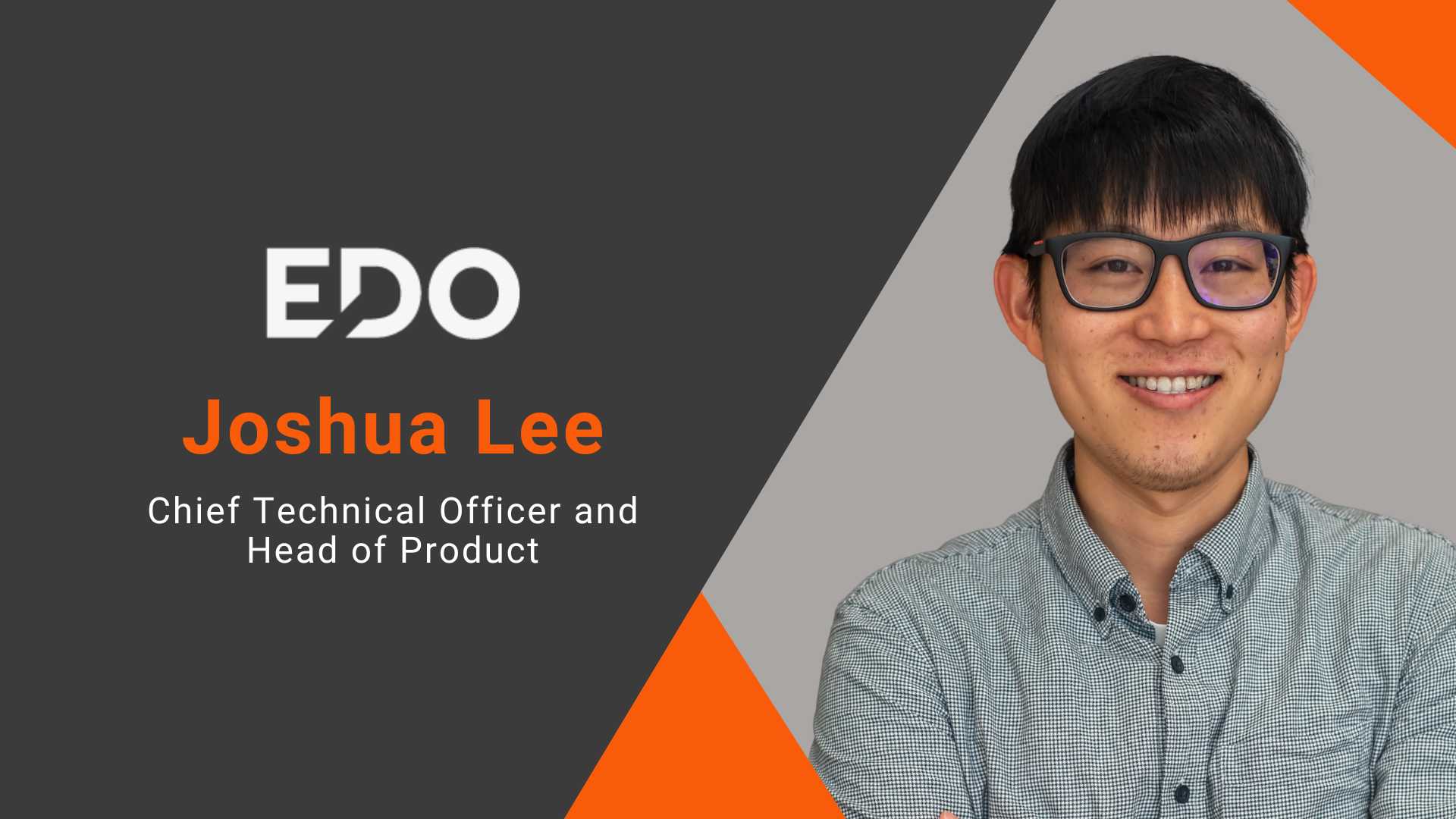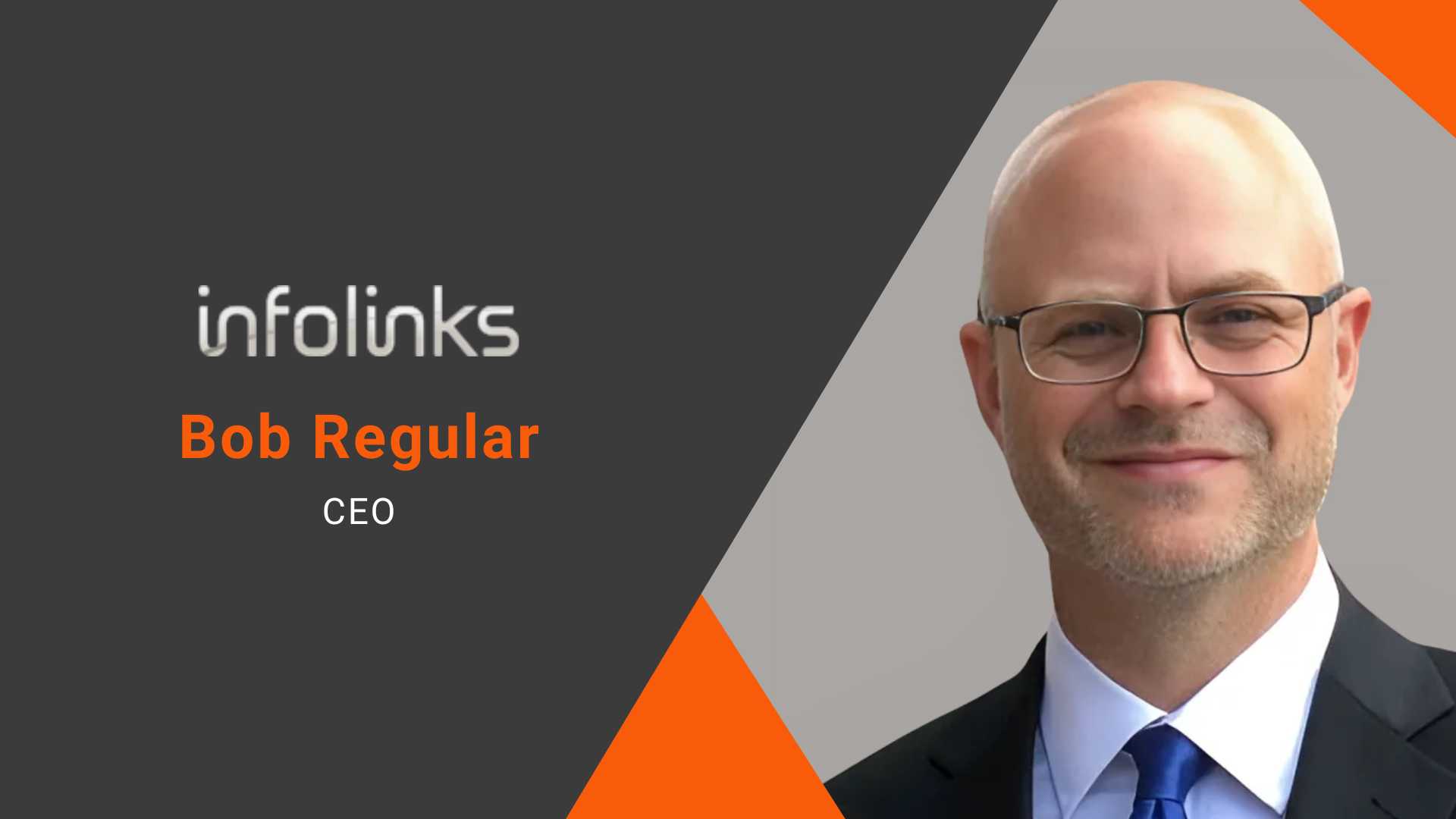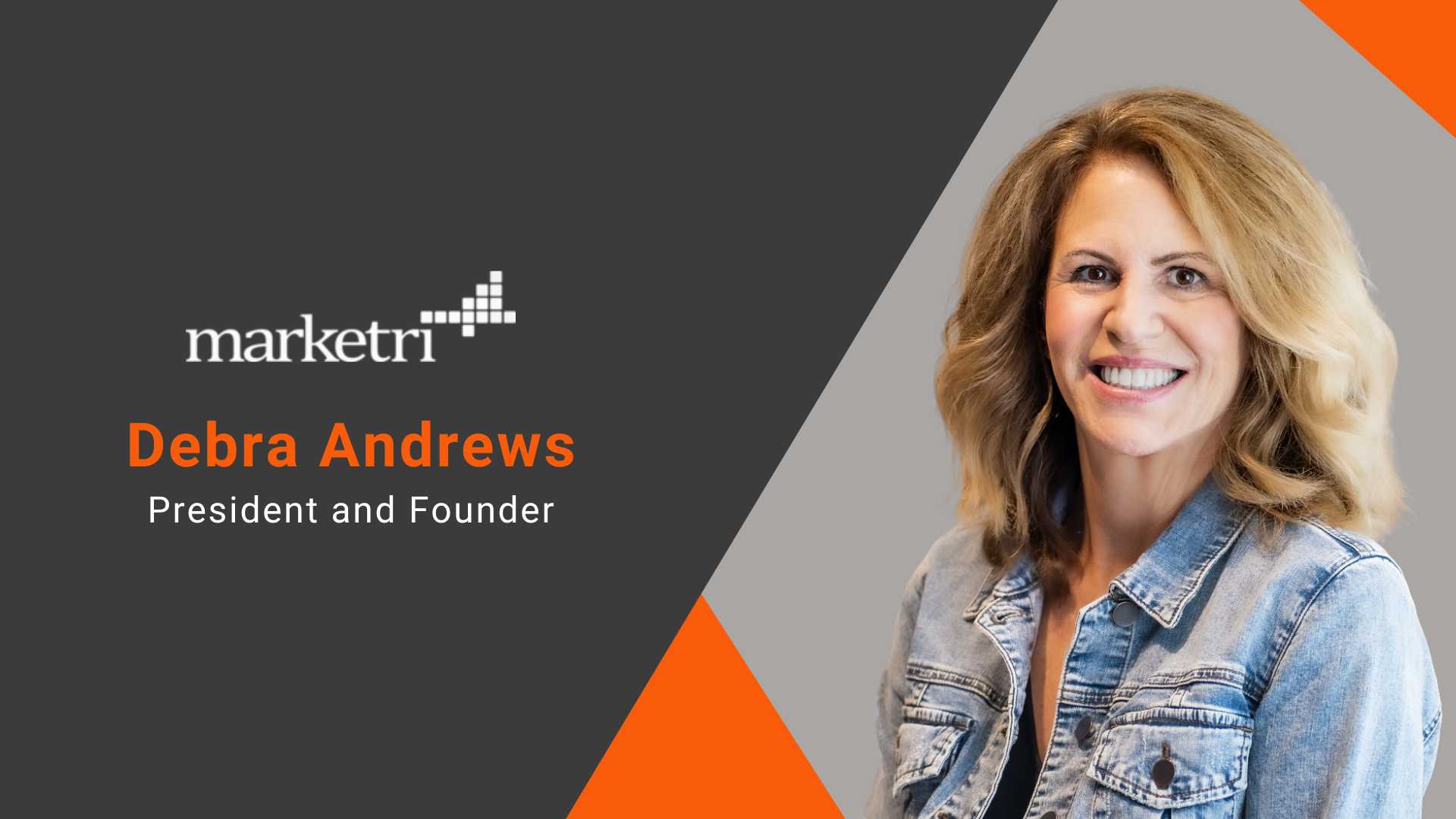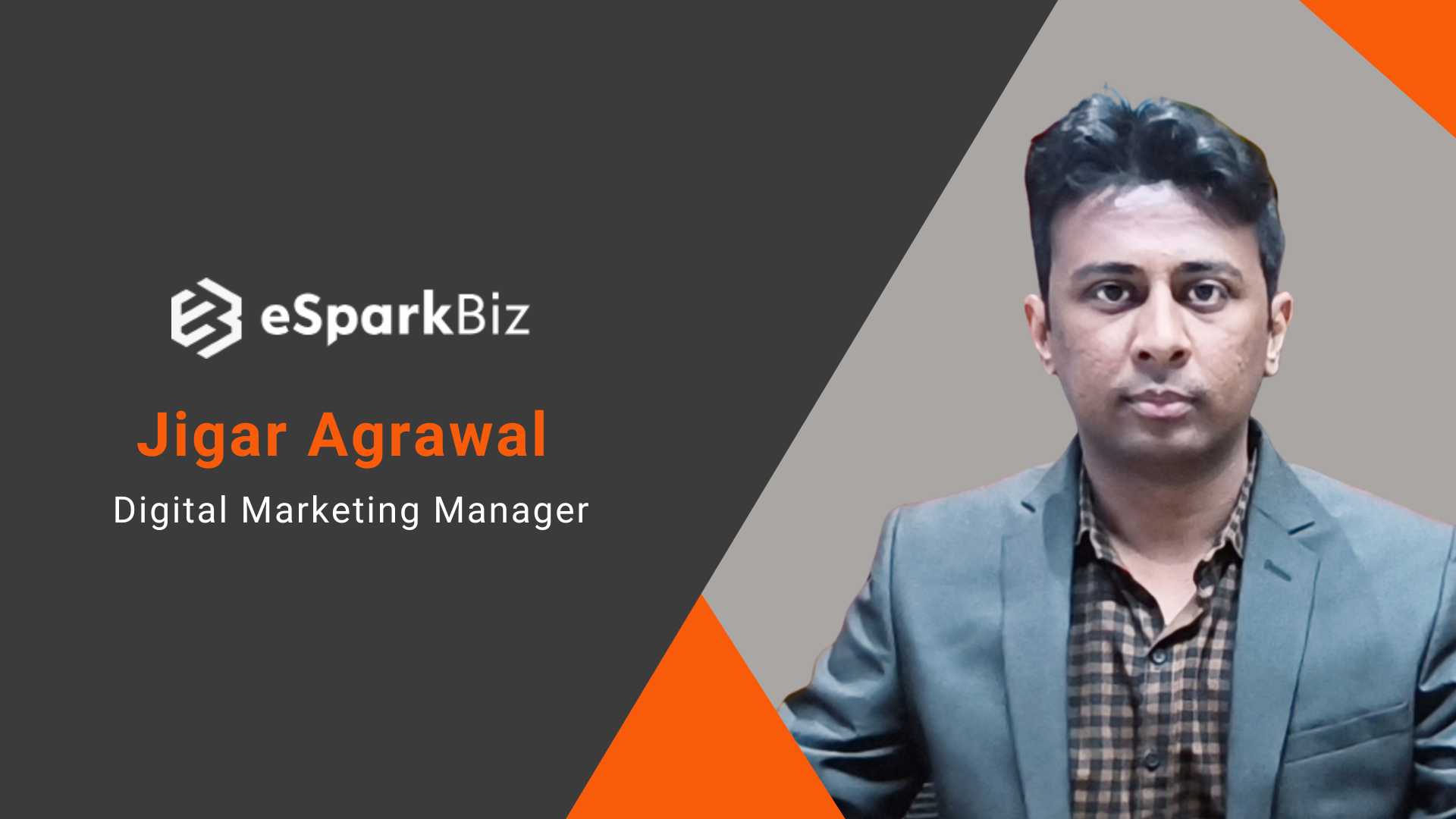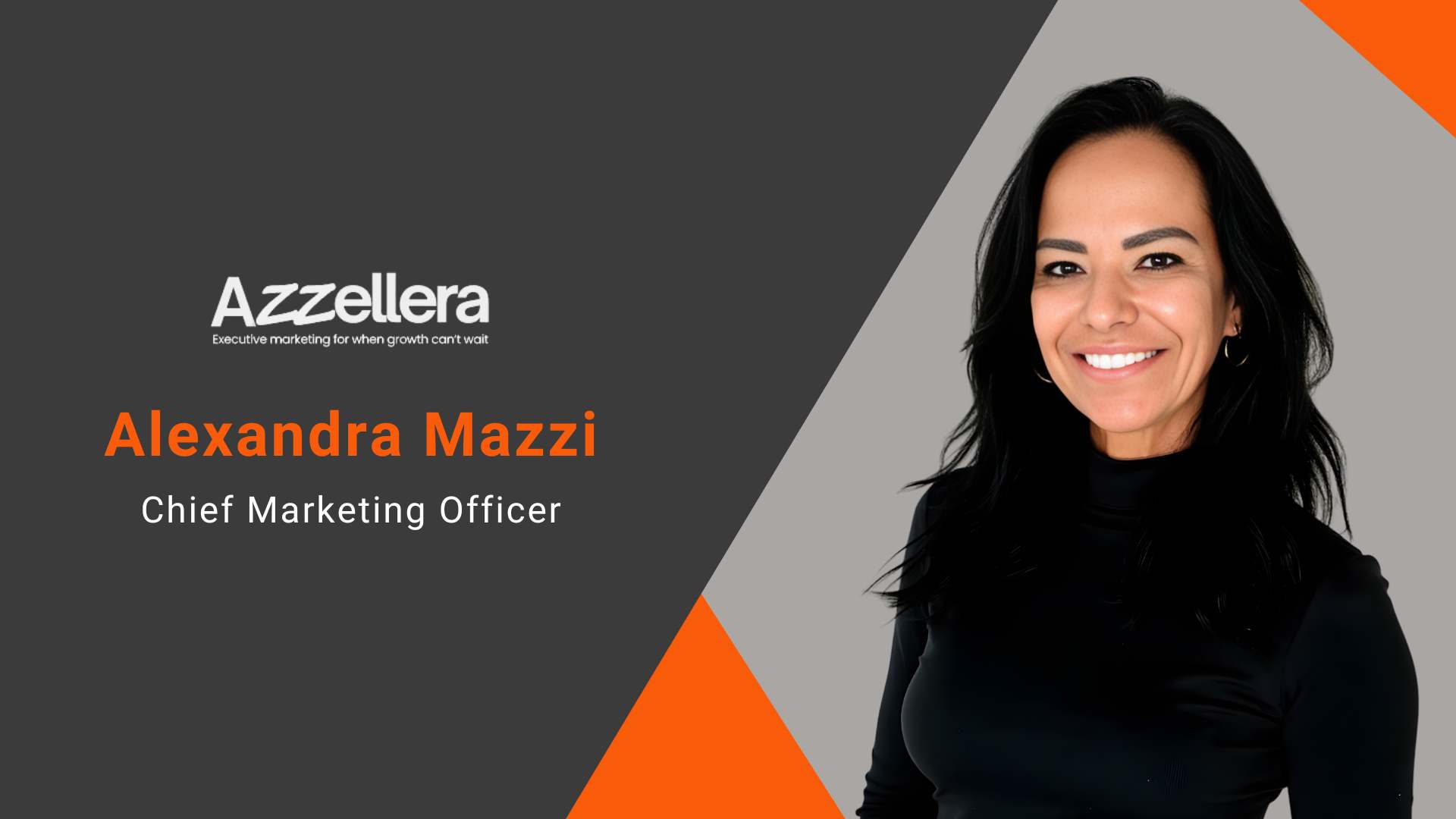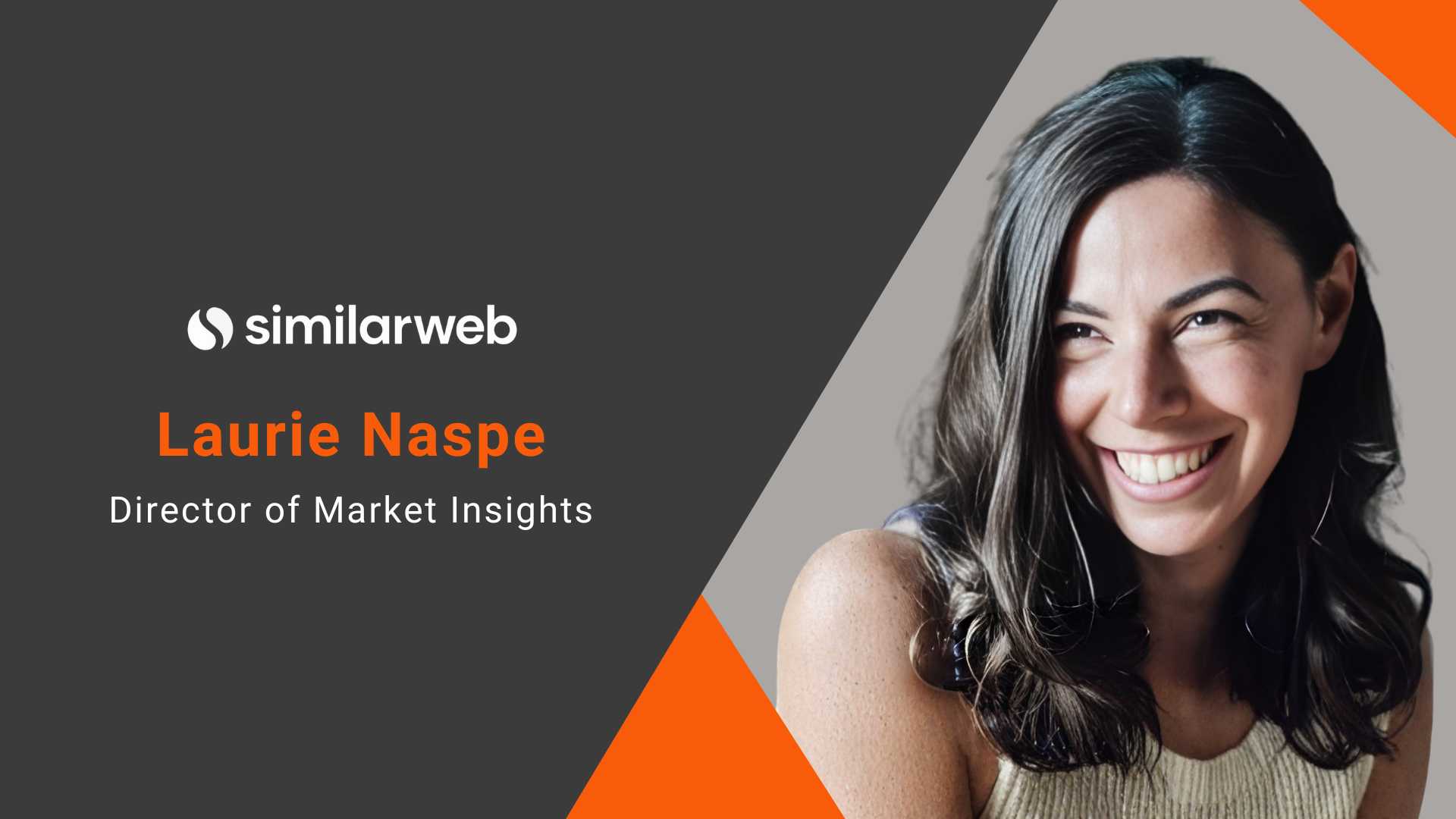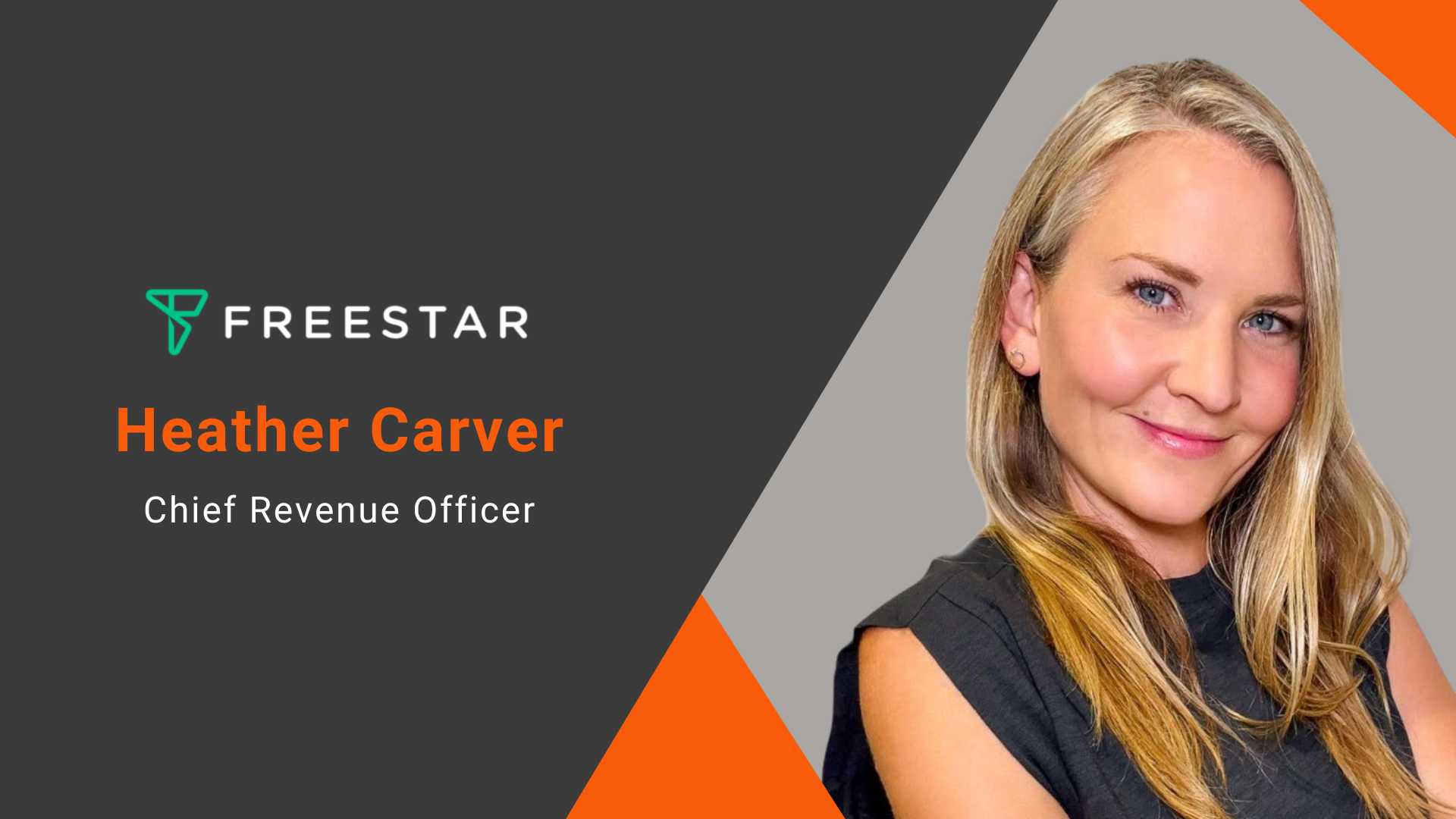
advertising
EDO’s Joshua Lee on Data-Driven TV Outcomes
advertising 11 Sep 2025
Advertisers face rising pressure to prove the value of their TV investments, especially in a fragmented market and amid ongoing economic uncertainty. Traditional planning often forces a trade-off between broad reach and measurable outcomes — a compromise many marketers can't afford to make.
EDO, the TV outcomes company, uses predictive engagement data that correlates to future sales to help advertisers bridge that gap. With tools like Engaged Audience Planning, EDO enables brands to test investment scenarios within their existing workflows and identify strategies that deliver both scale and performance. Joshua Lee, EDO's Chief Technical Officer and Head of Product, shares how the company's approach is helping advertisers plan with greater confidence.
1. What does the setup and onboarding process look like for advertisers using Engaged Audience Planning for the first time?
Media planning today is complicated enough, so we’ve made onboarding to Engaged Audience Planning as easy as possible. This process doesn’t require a new workflow or integration; we align with advertisers’ existing planning tools, like those from Nielsen, Kantar Media, or VideoAmp. Clients can see which scenarios offer the best combination of reach, engagement, and cost efficiency — all before a dollar is spent.
Advertisers simply share their existing media plans — including scenarios and metrics like GRPs or CPMs — with EDO. From there, our team maps the plans to EDO’s cross-platform TV outcomes data, calculating engagement rates and outcome efficiency for each scenario. This provides a clear, side-by-side comparison that illustrates how different investment scenarios can result in various combinations of audience impressions and outcomes.
2. EDO has measured over 110 trillion cross-platform impressions — how does this dataset power the predictive models behind the solution?
EDO’s dataset spans every major linear network and a growing number of streamers, enabling us to model how different audiences respond to ads. Our predictive models analyze ad-driven behaviors, such as brand search, website visitation, and LLM chat engagements, which are proven indicators of consumer intent. Using vertical AI to analyze engagement across trillions of impressions and hundreds of industries, we surface meaningful patterns that predict future performance by program, daypart, genre, and more. This enables us to forecast engagement outcomes at scale and optimize our approach toward them before campaigns even begin.
3. Can advertisers using other platforms (e.g. Adobe, etc.) also integrate EDO’s data for unified planning?
Whether it’s Engaged Audience Planning or any other product in our suite, EDO data is designed to be interoperable. Whether a brand is using Nielsen, VideoAmp, Kantar, or agency planning tools from Dentsu, GroupM, or IPG, EDO’s outcome data can be layered onto existing plans with no disruption. We’ve structured Engaged Audience Planning to work flexibly within the tools clients already rely on, often using exported files to match and model engagement outcomes. There’s no need for a formal integration or technical relationship to get started.
4. In what ways does Engaged Audience Planning support both brand awareness and performance marketing objectives simultaneously?
Traditional audience planning often forces a trade-off between brand reach and performance. With EDO’s data, advertisers no longer have to choose. Our solution helps brands identify plans that deliver both strong audience reach and measurable outcomes. That means marketers can optimize their investments for mid- and upper-funnel KPIs in tandem — a growing priority in convergent TV, where brand and demand goals increasingly overlap.
5. How do you see this tool fitting into or enhancing existing audience segmentation strategies used by brands?
Audience segmentation is essential, but advertisers don’t see the full picture unless they also know how viewers in each audience segment engage with the ads they see. By pairing outcome data with audience targets, EDO adds a crucial layer of intent to segmentation strategies, enabling advertisers to define their audiences and test which environments actually drive those segments to take action. This enables more effective media planning, where audiences are prioritized on both relevance and predicted performance.
6. What message would you give to brands still hesitant to fully embrace data-driven, outcome-optimized planning in a convergent TV world?
The media landscape is only getting more fragmented, and guesswork simply won’t cut it. Brands that embrace outcome-based planning gain a competitive edge — not just in efficiency, but in clarity. EDO helps advertisers make more confident decisions by connecting plans to real consumer behavior. If you’re still relying on audience reach alone, you may be missing the plans that deliver better results for the same or lower cost.
Get in touch with our MarTech Experts.
5WPR's Award Winning Cybersecurity PR Campaign for Huntress
advertising 27 Aug 2025
1. What role does media positioning play in your agency's broader client strategy to be recognized as a trusted authority in your industry, particularly in times of crisis?
Get in touch with our MarTech Experts.
Inside Shirofune’s AI-Driven Ad Automation: CEO Mitsunaga Kikuchi on Optimizing ROAS & LTV Across Channels
advertising 15 Jul 2025
1. What criteria are most critical for your enterprise when considering a transition to a new ad management solution (e.g., automation capabilities, cross-platform integration, AI-driven optimization)?
With the rise of machine learning and AI-driven ad campaigns, like Google's Performance Max and Meta’s Advantage+ shopping campaigns, much of the campaign optimization is handed over to algorithms. As such, marketers and advertisers may lose direct control over individual ad placements, and targeting decisions, with the platforms recommending or even automating many key aspects.
As a result, many marketers feel like they’re working within a “black box” because they don't have full transparency into how these platforms make decisions about ad delivery, budget allocation, audience targeting, and performance measurement—limiting their ability to make fully informed optimizations.
That is an important reason why advertisers should consider using a digital advertising platform - as these platforms can offer more transparency.
That is the major premise behind Shirofune, a company I founded in 2014. Shirofune, offers a transformative approach to automated advertising management, blending traditional campaigns with AI-driven ones – providing a far more comprehensive perspective, not to mention transparency, allowing marketers to analyze and understand how different channels contribute to overall performance.
For example, I programmed Shirofune to automatically handle budgeting, and bidding, and even to provide suggestions and explanations for why performance is either getting better or worse, just like an actual human expert.
The Shirofune platform is designed to function like a professional agency ad manager, automating key operational tasks while delivering improved campaign performance. Its AI-powered optimization engine dynamically adjusts budgets, bids, and strategies across platforms, giving marketers more time to focus on strategy rather than execution.
What customers are saying about Shirofune:
One of our clients, a major brand, told us they wanted to have a more programmatic approach to their advertising.
For example, when it came to budgeting, our customer told us that they used to have to create extra side reports to see if budgets were on or off target – and they just didn't have a holistic approach to navigating the spending.
Rather than relying on manual adjustments, Shirofune continuously analyzed performance across multiple data points — including ROAS, CPC, CVR, and volume — to identify statistically relevant trends. Now, underperforming ads or targeting settings can be automatically deprioritized within days, not weeks. Budget and bid modifiers are adjusted in real-time based on actual results, allowing the team to test, learn, and shift strategies with speed and precision — all without the delay of manual reporting cycles.
Shirofune has also empowered clients like Yamazen Corporation and Newegg Commerce to achieve measurable business growth. For Yamazen, Shirofune's automation capabilities resulted in a 30% increase in ad-driven sales and an 18% improvement in ROAS within two months. Similarly, Newegg Commerce saw an 18% increase in clicks and a 10% improvement in ROAS, demonstrating the platform's ability to dynamically optimize campaigns during high-converting periods.
For Dentsu, the platform reduced bid and budget management tasks by 45% and client reporting workloads by 62%, enabling the agency to scale operations while maintaining quality. These outcomes showcase Shirofune's ability to drive innovation, improve operational efficiency, and deliver tangible business value.
2. How important is automation in your digital advertising strategy, particularly features like automated budget allocation, bid adjustments, and target ROAS optimization?
In the digital advertising world, the be-all and end-all metric is ROAS. However, manual budget allocation makes optimizing ROAS nearly impossible: there are simply too many factors to stay on top of. Digital ad platforms, by contrast, make it quite easy.
ROAS is just one of the many objectives. The Shirofune platform makes testing against different objective optimizations significantly easier, so advertisers can better understand how changes in campaign goals can impact performance.
Shirofune is designed to handle cross-channel ad budget allocation using both data and AI — making real-time adjustments that human teams simply can't replicate at scale.
○ Here is what the Shirofune platform can accomplish:
1. Automated Budget Allocation:
Automatically adjusts daily ad spending based on performance data across all platforms. If Meta underperforms one day and Google is converting better, your budget shifts accordingly — no guesswork, no delays.
2. Unified Strategy Layer:
Shirofune offers only one interface that manages, compares, and optimizes campaigns across multiple channels. This leads to faster decision-making and holistic budget planning.
3. Continuous Optimization with AI:
The role of AI is paramount. AI doesn’t just track metrics — it learns from performance patterns over time and adjusts spend, bidding, and targeting dynamically.
Let’s take a client we have worked with for the past year. The ability to allocate appropriate budgets to each campaign and dynamically adjust target ROAS as per budgets can lead to a 10%+ increase in ROAS, including an 18% increase in clicks while reducing ad spend. By using Shirofune, the client was able to get a more accurate assessment of Google Ads and Microsoft Advertising performance.
3. What challenges have you faced in achieving seamless cross-platform budget allocation and performance analysis, and how are you addressing them?
We have helped many of our clients rely on Shirofune to automate their budget allocation based on performance data. Our system constantly compares campaigns and placements, identifying where each dollar delivered the strongest return. Budgets were shifted daily — sometimes hourly — toward top performers, and bid modifiers were adjusted across devices, times of day, and audiences. The platform’s automation ensured that spending followed results, not assumptions, which meant more budget went to what was working and none was wasted on what wasn’t.
4. What role does LTV-based optimization play in your advertising strategy, and how are you implementing it across campaigns?
Return on ad spend (ROAS) has traditionally been considered the gold standard for measuring the financial return of ad campaigns. Its primary focus is on short-term revenue, however, it doesn't consider either customer lifetime value (LTV) or new user acquisition, while indiscriminately mixing both new and existing customer conversions in its ROAS calculations. This narrow focus may please clients with immediate results but can overlook opportunities.
In contrast, Lifetime ROAS is emerging as a more holistic metric that assesses the value of acquiring new users as well as the long-term engagement and profitability of customers. By optimizing campaigns to identify and target customers with higher LTV, businesses can enhance their overall profitability and achieve sustainable growth.
This information is continuously evaluated by the system and used to make real-time decisions that actually optimize ROI. These decisions are undergirded not just by primary data but by deep, AI-augmented analyses of performance patterns over time. In other words, these ad platforms are not merely reactive but predictive.
Instead of rapidly cycling between spreadsheets, advertisers can get an at-a-glance view of cross-platform campaign performance on a unified interface. Instead of groping in the dark to build monthly or quarterly ad budgets out of guesswork, they can undertake long-range planning with the kind of confidence that only AI-enhanced data can provide.
○ Data Accessibility: LTV-based ad management requires more robust data from a breadth of sources. For example, Google knows when people buy products on e-commerce platforms through its advertisements. Shopify, on the other hand, can identify whether customers are new or existing and can track if customers come in organically and when they make return purchases. Google does not have access to this range of data, so both of these sources would better enable LTV. Capturing and analyzing customer data benefits from integrating different elements, from customer relationship management (CRM) software to analytics tools, in order to better track and measure buyer behavior.
○ Predictive Modeling: Recent advances in artificial intelligence have increased predictive modeling capabilities. Predicting customer LTV accurately is crucial for making informed advertising decisions. By leveraging machine learning algorithms and historical customer data, businesses can build better predictive models to estimate LTV and allocate resources strategically.
○ Testing and Optimization: No matter how advanced technology tools become, humans will always need to fine-tune systems and course correct as needed. LTV-based ad management requires continuous testing and optimization. Experimenting with different ad creatives, platforms and targeting strategies is essential to identify the best-performing combinations that maximize LTV.
5. As your organization expands globally, how are you ensuring that your advertising management platforms can support diverse markets and regional requirements?
Shirofune is built on a philosophy of automating what experienced professionals desperately need—replicating human insight and decision-making at scale. Marketers and agencies require continuity, automation, and trusted support, and Shirofune’s goal is to offer advertisers an exciting new way forward for a complete digital marketing program.
Moreover, Shirofune continues to adapt to emerging channels such as programmatic and retail media, which are expected to grow significantly. As advertising complexity increases, Shirofune not only keeps pace with industry changes—it anticipates them, earning the trust of brands and agencies alike.”
6. What strategies are in place to adapt your advertising campaigns to different cultural and market dynamics while maintaining brand consistency?
We need to change to - what specific steps have you taken so that US agencies understand and appreciate Shirofune?:
The Shirofune ad platform has a 91% market share in Japan because it automates most of the work, cutting the time needed to manage online advertising by at least 50%. We want to replicate our success in Japan in North America, giving American marketers and agencies the same savings in time and the most optimized performance in ad spending. Shirofune streamlines and standardizes ad operations, is incredibly easy to use and delivers superior results and intelligence across all digital ad channels.
In order to bring Shirofune to the United States and other markets around the world, we have broadened our reach by joining more associations and organizations such as the Association of National Advertisers.
We also are constantly updating the platform. We recently announced the integration with Google’s DV360 (Display & Video 360), an enterprise-level demand-side platform (DSP) for programmatic ad campaigns.
Additionally, we integrated LinkedIn Ads into our digital advertising automation management platform. The integration offers advertisers and agencies the ability to manage their LinkedIn ad campaigns alongside other major platforms such as Google Ads, Facebook, Instagram, Amazon Ads, Microsoft Advertising, Pinterest, TikTok, BigCommerce, and Shopify.
Shirofunealso recently integrated with BigCommerce to predict and optimize ad campaigns based on customer lifetime value. The integration allows advertisers to connect ad performance data with customer lifecycle insights, including whether customers are new or returning, their purchasing behaviors, and predicted lifetime value.
Get in touch with our MarTech Experts.
Bob Regular on Redefining Digital Advertising: Smart Supply, Transparency & Innovation
advertising 14 Jul 2025
1. What best practices should publishers follow to streamline their ads.txt approach without sacrificing revenue opportunities?
The best approach to ads.txt is grounded in quality over quantity. Publishers should conduct regular audits to remove outdated or inactive sellers and focus on maintaining partnerships that consistently perform. A clean, accurate file makes it easier for buyers to identify trusted paths and prioritize inclusion in curated deals. This contributes directly to supply path optimization, reducing waste while improving monetization. In a tighter economic climate, clarity in ads.txt also helps buyers allocate budgets with confidence, especially when paired with exclusive inventory access.
2. What are the biggest misconceptions about reducing intermediaries in ads.txt, and how should publishers approach this strategically?
The biggest misconception is that all intermediaries are inefficient or unnecessary. In reality, some resellers provide real value by facilitating performance, offering proprietary demand, or enhancing yield through optimization technology. The goal should not be indiscriminate removal but smart curation. Publishers should assess partners based on financial outcomes, not just labels.
It’s a bit like buying a rare classic car. Just because you’re purchasing it through a trusted dealer instead of the original owner doesn’t mean it’s any less valuable. The same logic applies to reseller paths that connect directly to premium inventory. Strategic pruning reduces clutter while keeping the partners that contribute to scale, efficiency, and even sustainability by minimizing duplicative auction activity and tech strain.
3. What key factors should advertisers and publishers consider when evaluating reseller relationships?
Performance, transparency, and efficiency should be the benchmarks. Advertisers and publishers need to evaluate whether a reseller provides access to exclusive inventory, enhances campaign delivery, or brings in demand that improves fill rates and yield. Curation is key here. In a market impacted by inflation, tariffs, and tighter margins, every intermediary must help stretch budgets and reduce complexity. The best partners are those who drive measurable results while lowering the total cost of acquisition and delivery.
4. How does an optimized programmatic supply chain contribute to reducing ad fraud and improving trust in digital advertising?
An optimized supply chain simplifies the buyer-to-publisher path, which inherently reduces opportunities for fraud and inventory spoofing. With fewer unknown entities in the mix, buyers gain a clearer view of where their ads are showing and how their dollars are being spent. This transparency builds trust and helps brands feel confident investing in programmatic, especially when coupled with curated, exclusive supply paths. It also improves sustainability by reducing unnecessary auction calls and network load.
5. What role do resellers play in ensuring quality inventory and optimizing programmatic transactions?
Resellers often provide the connective tissue between premium publishers and buyers. Many operate curated marketplaces, manage direct publisher relationships, or offer tools that improve on-page delivery and contextual alignment. These capabilities contribute to supply path optimization by streamlining access and reducing operational bloat. When done right, resellers also support sustainability by improving efficiency and cutting down on excessive bidding activity. Their impact is especially valuable in a market where economic efficiency is non-negotiable.
6. How does transparency in the supply chain influence advertiser confidence and budget allocation in programmatic advertising?
Transparency is the foundation of smarter, more efficient media buying. When advertisers can clearly trace where inventory comes from and who is involved in the transaction, it eliminates guesswork and builds confidence in the ecosystem. That trust leads to better allocation of media budgets toward curated, premium, and exclusive inventory paths that offer stronger performance and lower waste. In this economy, efficiency and accountability are just as important as reach.
Get in touch with our MarTech Experts.
Navigating MENA Healthcare: Strategy by Carlo Nakhle
advertising 10 Jul 2025
- How are you positioning yourself to support clients in navigating regulatory, cultural, and market-specific complexities?
Launching our newest office in the MENA region allows us to build a team of regionally based talent, possessing an expert understanding of the diverse regulatory landscape, cultural significance, and market-specific complexities. We are positioned as true partners to our clients, so we don’t just deliver the final product; we guide them through cultural nuances and regulatory guidelines to ensure they comprehensively understand these markets.
- How do you plan to tailor services such as digital health innovation, patient engagement, and multichannel marketing to meet the specific cultural and clinical needs of the MENA audience?
Central to all our work is a core understanding of how communities across different MENA markets access, trust, and act on health information. In this region, tailoring solutions accordingly is necessary, whether it’s adjusting digital tools or incorporating cultural and social considerations. From hyper-specific messaging to leveraging trusted community figures, our engagement strategies are rooted in cultural respect and clinical relevance.
- How can you integrate global best practices with local healthcare priorities to deliver meaningful outcomes for patients and healthcare professionals?
We benefit from a dual approach. Our work is guided by the Havas Life global mission to inspire ideas and improve lives, which ensures alignment with international best practices and standards. At the same time, we operate with deep local insights, allowing us to balance global consistency and local relevance. This dual approach empowers impactful, meaningful, and localized work.
- How do you ensure that storytelling and campaign strategies reflect the cultural values, health literacy levels, and communication preferences of diverse populations?
Authentic storytelling starts with audience research to understand beliefs, behaviors, and cultural contexts that shape how patients in the MENA region engage with information. This localized strategy informs the tone of voice, imagery, and how we structure information within a campaign. Values, literacy levels, and communication preferences aren’t just respected; they’re embedded in every step of the creative process, influencing how the work is conceived, created, and shared.
- What are the biggest risks or barriers to success in this regional expansion, and how is the leadership team planning to mitigate them?
One of the key challenges in the MENA region is the fragmented regulatory landscape. Each market requires its own approval process, which can create additional complexities for clients operating across borders. We’ve addressed this by structuring an agency with regulatory fluency, ensuring we can provide expert guidance at both local and regional levels.
We are also working to overcome the uneven pace of digital impact while the demand for healthcare communications accelerates. Some markets are highly digitized with advanced healthcare ecosystems, while others are still building digital foundations. This means we tailor digital strategies market-by-market.
- How do you see the role of healthcare advertising evolving in the next 3–5 years, and how are you preparing for this shift?
We believe healthcare advertising is shifting from transactional to transformation. As the landscape becomes more consumer-centric, we expect advertising to take on more responsibility for building awareness and providing education, empowerment, and navigation. The most successful campaigns won’t just inform; they will inspire action, drive behavioral changes, and support long-term health outcomes. We’re building teams, acquiring tools, and seeking partnerships to set us up for early success as this shift takes shape.
Get in touch with our MarTech Experts.
Chris Savage on the Future of Video Marketing: AI, Localization & Global Growth | Wistia 2025
video advertising 27 Jun 2025
- How is Wistia thinking about the role of video in global marketing strategies in 2025? Are you seeing more demand for tools that support regional or audience-specific content?
Video is no longer just a single asset. It’s the backbone of marketing. It fuels social engagement, can be educational and builds trust fast. But, to successfully reach a global audience, it has to be personal, relevant and easy to produce at scale. This is where localization comes in. Not just subtitles of an audience’s native language, but voice dubbing of the language.
At Wistia, we have doubled down on innovation with AI dubbing, translations and automated workflows in video. These tools help marketers reach a global audience that feels authentic and helps build trust and loyalty.
- What’s Wistia’s perspective on the use of AI in video production and personalization? Are there features within the platform that help streamline tasks such as transcription, translation, or targeted content delivery?
At Wistia, we see AI as a powerful tool to help marketers scale their video efforts without sacrificing quality. Our 2025 State of Video Report found that there’s been a massive shift in how AI is being used. Last year, just 18% of video professionals reported using AI to create content. This year, that number has more than doubled to 41%, reflecting the growing demand for more efficient and versatile video production.
But AI’s role goes beyond speed and scale. It also plays a critical part in improving video accessibility. Wistia has an AI-powered transcription feature that automatically generates transcripts as soon as a video is uploaded, making it easy to repurpose content or add captions. In fact, we’re the first video marketing platform to offer end-to-end AI translation and voice dubbing, enabling users to localize their videos with just a few clicks. All marketers need to do is simply generate a transcript and choose the desired languages to add captions or dubbed audio. On the delivery side, Wistia also leverages a global Content Delivery Network (CDN) to optimize streaming performance, ensuring audiences get the best possible viewing experience wherever they are.
AI should enhance, not replace, the human element in video. Trust and authenticity still come from people. The tools that will truly succeed are those that integrate seamlessly into existing workflows, making adoption easier and impact greater.
- How important is delivering region-specific, culturally relevant video content in building brand loyalty among international audiences?
It’s very important. When you’re speaking to international audiences, region-specific and culturally relevant video content can make all the difference in how your brand is received. People typically connect more deeply when content feels tailored to them. Not just in language, but in tone, visuals and references that reflect their culture. It builds trust and makes brands feel more human.
With Wistia tools like AI-powered dubbing and localization, it’s easier than ever to create content that resonates across different markets – without needing to reinvent the wheel for every region. In the long run, thoughtful and authentic content is what will drive loyalty and lasting relationships with audiences.
- What key metrics can marketers track in Wistia to understand the impact of their video efforts?
Wistia provides marketers with a robust set of analytics to measure the true impact of video efforts. Key metrics include play rate, which shows how many viewers are actually clicking play (helpful for evaluating thumbnails and video placement) and engagement graphs, which reveal exactly where viewers are dropping off, skipping ahead or rewatching the video. Video heat maps also offer even deeper insights at the individual viewer level, highlighting which parts of a video resonate most with audiences.
For marketers focused on conversions, Wistia tracks in-video elements like turnstile forms, calls-to-action and annotations to drive lead generation and engagement. Marketers using Wistia Channels also benefit from aggregated insights that show how their entire video libraries are performing and which content drives the most value. Together, these metrics empower teams to move beyond surface-level stats and make more strategic, data-driven decisions about their video content.
- How does Wistia see the balance between native capabilities and third-party integrations? Are there areas where you're intentionally leaning into partnerships versus building in-house?
At Wistia, we focus on blending powerful native features with seamless integrations, so marketers get the best of both worlds – without disrupting their existing tech stacks. Our team is committed to making video creation and marketing accessible to everyone, not just seasoned video producers, which is why we invest heavily in integrated capabilities like AI-powered transcription, dubbing and video editing tools. These features allow marketers and teams of all sizes to create high-quality, on-brand content without needing a full in-house production crew.
Whether it’s our integrations with HubSpot or Marketo for lead tracking, or Pardot for analytics, we lean into partnerships that make user workflows smoother and more powerful. Ultimately, it’s about giving teams the flexibility to move fast and create videos without friction, regardless of their production experience.
- As companies scale their video libraries, how is Wistia supporting consistency in quality, branding, and workflow efficiency across large teams and multiple campaigns?
As companies grow their video libraries, Wistia makes it easy to stay consistent and efficient across teams and campaigns. Built-in brand controls, such as custom video players, colors and thumbnail presets, keep everything looking consistent and on-brand. Content stays organized with folders and channels and user permissions help make sure the right people have access to the right tools.
For teams juggling a lot of video content, Wistia Channels also helps to group videos into branded collections that double as landing pages. Plus, with features like automatic transcription and AI-powered localization and integrations within the platform, workflows are smoother and faster. This lets teams scale their video content fast, without sacrificing quality or control.
Get in touch with our MarTech Experts.
Scott Simonelli on the Future of Audio Advertising: Measurement, Scale & Creative ROI | Veritonic
advertising 27 Jun 2025
1. With the new enhancements to your Creative Measurement solution, how do you envision improving the speed and accuracy of testing audio assets at scale?
The enhancements to our Creative Measurement solution were designed with scale in mind. By streamlining asset setup and enabling real-time, in-platform collaboration, we’re significantly reducing the time it takes to go from concept to actionable insight. Brands can now test multiple creatives across target audiences simultaneously, eliminating the bottlenecks that traditionally slowed down pre-market testing. The result is faster validation, sharper messaging, and more confident media investment decisions—all without sacrificing the scientific rigor our partners rely on.
2. What role does creative measurement play in your media investment decisions, particularly within the growing audio advertising landscape?
Creative measurement is no longer a “nice to have”—it’s a strategic imperative. In a medium as intimate and impactful as audio, the difference between good and great creative can directly impact ROI. We use creative measurement to not only understand what resonates but why it resonates. This allows us to double down on high-performing assets, optimize underperformers, and ensure every dollar we spend is driving maximum return.
3. What challenges have you encountered in aligning marketing, creative, and analytics teams on campaign objectives, and how could integrated feedback features help address those issues?
One of the biggest challenges we hear about is translating qualitative creative ideas into measurable performance goals that everyone—from the brand team to the data scientists—can rally around. When feedback lives in email chains or spreadsheets, it creates silos. By integrating campaign objectives and feedback directly into the measurement platform, we’re fostering alignment among various teams across an organization from the start. Everyone sees the same data, speaks the same language, and works toward the same outcome.
4. How important is cross-functional alignment in a brand’syour creative testing processes, and how can they do you plan to take advantage of capabilitiestools like permission-based collaboration features?
Cross-functional alignment is essential. The most effective campaigns are born when creative, strategy, and analytics come together around shared KPIs. With permission-based collaboration, clients can securely loop in the right stakeholders at the right time—whether it’s brand managers reviewing creative effectiveness or analysts diving into audience segmentation. This level of control ensures focused collaboration without unnecessary noise, enabling teams to move quickly and make smarter decisions together.
5. As an organization evaluates platforms for creative measurement, how important is it to integrate feedback loops and campaign objectives directly into the analytics environment?
It’s critical. Measurement in isolation is just data. When you embed feedback loops and campaign objectives into the analytics environment, you turn that data into direction. Our goal is to enable iterative creative refinement—where insights lead to immediate action, and action leads to better outcomes. That’s what drives continual improvement and sustained brand lift across channels.
6. With the continued rise of podcasting and streaming audio, how are brands you evolving theiryour marketing strategies to ensure consistent brand voice and performance across all audio channels?
Consistency in brand voice is non-negotiable—especially in audio, where tone and sound identity carry so much weight. We’re evolving our client’s strategies by putting creative testing at the center of every audio investment. From host-read podcast ads to dynamic streaming audio spots, we can validate every asset against our benchmarks for recall, favorability, and resonance. This ensures a brand’s voice is not only consistent but consistently effective—no matter where it’s heard.
Get in touch with our MarTech Experts
Building a Culture of Trust: How AdCellerant Secures the AdTech Ecosystem
advertising 26 Jun 2025
1. Does your organization have a dedicated transparency mechanism (e.g., a Trust Page or compliance portal) for sharing audit reports and certifications?
We have a dedicated Trust & Compliance page (https://adcellerant.com/soc-trust-center/) where partners and clients can access up-to-date information on our security certifications, audit reports (under NDA), and privacy commitments. This centralized portal highlights our commitment to transparency and trust across the ecosystem.
2. What measures have you taken to ensure your AdTech stack mitigates cybersecurity risks across the full customer lifecycle?
We’ve embedded security at every layer of our AdTech stack—from secure software development practices and vulnerability scanning to end-to-end data encryption and granular access controls. Our infrastructure is continuously monitored, and we enforce a least-privilege model to mitigate risks across onboarding, campaign execution, reporting, and offboarding. Regular third-party audits and penetration testing also ensure a strong security posture throughout the customer lifecycle.
3. How important is third-party validation (e.g., SOC 2, ISO 27001) when selecting partners or vendors in your MarTech/AdTech ecosystem?
It’s critical. Third-party validations like SOC 2 Type 2 and ISO 27001 are table stakes for us when evaluating vendors. They demonstrate a baseline maturity in security and operational integrity. These certifications allow us to scale confidently and reduce risk exposure across our interconnected platform ecosystem.
4. How do you educate advertisers and agencies on your platform about the importance of working with certified, secure partners?
We proactively integrate security and compliance messaging into our onboarding, sales enablement, and partner training materials. Our client success team highlights the business value of working with certified platforms, including risk mitigation, regulatory alignment, and brand protection. When needed, we also facilitate deeper discussions between client security teams and our compliance leads.
5. What internal processes have you implemented to ensure your data protection practices align with evolving global compliance standards?
We maintain a robust compliance program governed by our Security and Compliance Steering Committee, with quarterly policy reviews and continuous mapping against frameworks like GDPR, CCPA, and ISO 27701. All employees undergo mandatory security training, and our engineering teams follow a secure SDLC that includes data classification, anonymization practices, and automated compliance checks within CI/CD.
6. Do you anticipate adding more certifications or security standards to your roadmap to support future growth and global expansion?
Yes. As we expand globally and serve increasingly complex verticals, we’re evaluating additional certifications such as ISO 27701 (Privacy Extension) and CSA STAR. Staying ahead of evolving regulatory and client requirements is a core part of our roadmap.
Get in touch with our MarTech Experts.
Page 1 of 5
Most Recent
The 2025 Reality of the Solo Marketing Coordinator
Interview Of : Debra Andrews
How AI Is Transforming Martech – Jigar Agrawal from eSparkBiz
Interview Of : Jigar Agarwal
Transforming Marketing into a Growth Engine
Interview Of : Alexandra B. Mazzi
AI Search Optimization Can't Wait: Why Marketers Must Adapt Now
Interview Of : Laurie Naspe
The Rise of Agentic AI: How MetadataONE Is Transforming the Entire GTM Workflow
Interview Of : Lisa Sharapata
How Freestar and Audigent are Powering Future-Proof Publisher Demand
Interview Of : Heather Carver
